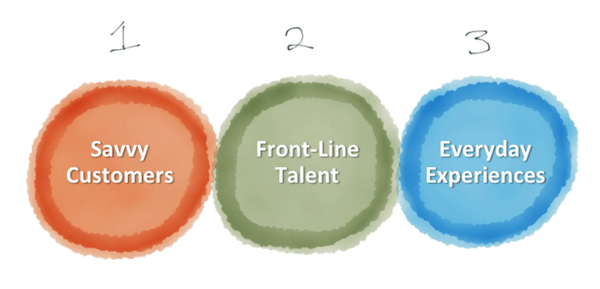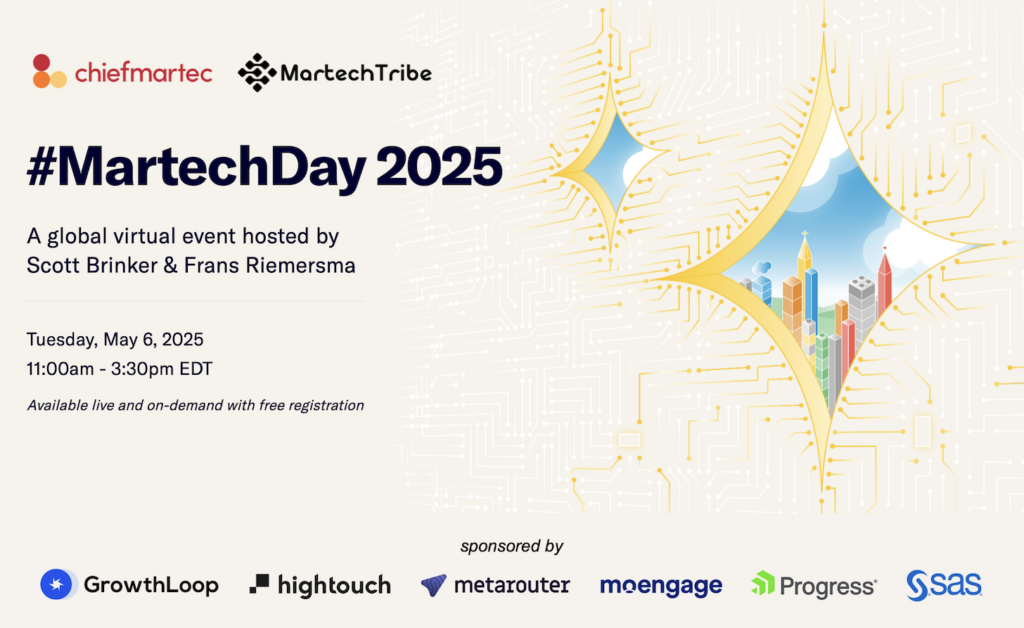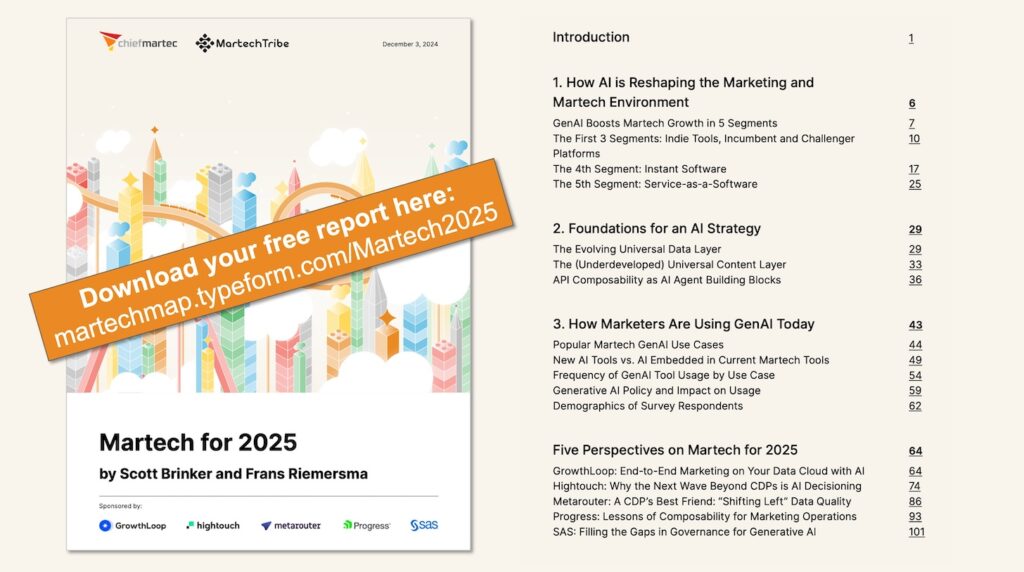
You can imagine that being the CIO at Google could be a pretty tough gig.
The whole company is teeming with super smart engineers. A large number of them are under 30 millennials who are famously opinionated. The culture encourages this and thrives on independent initiatives. And experimental techno-Petri dishes surely sprout around every corner.
You try to provide IT that makes all those folks happy.
So I was fascinated to read a great interview with Google’s CIO, Ben Fried, on the Harvard Business Review blog last week that revealed some of the innovative ways he tackles that challenge.
And his approach struck me as highly applicable to marketing. Here are the three lessons I took away from his interview.
1. Savvy customers
First, acknowledge that your customers are savvy. Google employees, the article notes, “aren’t haplessly trying to set up their voicemail; they’re experts in technology and expect it to work.” Ben sees them as representative of a broader shift in the workforce.
“I’d had these very early indicators when I was an IT leader at an investment bank that the demographics among the users of technology had changed. I was starting to see the effects of having a deeply technology-savvy workforce across the company, and not just in IT. And I saw that that led to big change.” (Emphasis added is mine.)
In short, the balance of power has shifted from IT managers to IT users.
This is analogous to the upheaval in marketing: the balance of power has shifted from sellers to buyers. Buyers now have much more control over their journey through the purchasing funnel, able to turn to search and social sources for information instead of relying on the canned pitch of a salesperson or the perfect spin of a glossy brochure.
Your customers are far more savvy than they were 10 years ago.
This has raised the bar significantly for marketing. You can’t feed your audience fluff. If you want their attention — and eventually their enthusiasm — you need to deliver better, richer, deeper content and experiences than they can find elsewhere. You need to help them purchase the way they want to purchase.
2. Front-line talent
Second, to deliver on the expectations of savvy customers, you need strong front-line talent. Ben takes great pride in hiring real experts on the front line of IT support — an approach that runs counter to traditional help desk economics.
“The standard approach is to apply tough cost control. That generally means that front line, in many cases, are the lowest cost of labor, who are generally working off a well-scripted common recipe of how to provide tech support. The sad thing is, a savvy knowledge worker can tell you’re dealing with someone who’s not really an expert.” (My emphasis.)
But doesn’t this just cause IT expenses to mushroom?
No, says Ben. “It’s actually a lower-cost approach, because it’s faster for a more tech-savvy person to resolve the problem. Secondly, you can do more with a smaller support workforce as a result. Third, you get better people when you take this approach, because you get people who are attracted to solving hard problems.”
It results in “a virtuous cycle that brings costs down and customer satisfaction up.”
Content marketing and social media marketing programs should seriously consider this model. Sure, you could hire cheap labor to churn out schlocky content by the bucketload. Throw enough things against the wall, with link-baity titles, and you can get page views. But are you really building a brand? Are you imparting knowledge to your customers that will endear them to you? Or is it just sound and fury signifying nothing?
Your savvy customers can tell the difference.
To produce great content, you need great people. Treating it as a craft. Bringing real passion to it. Producing fewer pieces of higher quality that are worth reading. Worth sharing. Worth loving. Because one amazing piece that impresses everyone who sees it, spreads like wildfire, and magnetizes your purchasing funnel can actually pay far greater returns than a larger, cheaper schlock brigade.
3. Everyday experiences
Third, in IT — as in marketing — it’s easy to get preoccupied with major strategic initiatives at the expense of giving love and attention to the everyday experiences that people have with you.
“I often see an inadequate amount of time spent where the day-to-day, most frequent touchpoints are, which is with all the other ways the people in the company are their users. One of the big changes that has come with the mass consumerization of technology is that IT needs to flip that around a little and spend more time focusing on the overall employee experience.” (My emphasis.)
“It’s really important that you make sure that that daily impression, that first impression they get of IT, is a good impression.”
For marketers, it’s easy to get caught up in the next major campaign. But the majority of the touchpoints that customers have with us include far more experiences than the typical campaign. It’s all the rest of the content on our website and blog. It’s how our web and mobile apps behave. It’s the quality and relevance of what is emailed through our nurturing programs. It’s the materials we provide for sales support deeper in the funnel.
Major initiatives, in marketing and IT, are definitely important. But per Ben’s advice, we want to balance investment between the strategic and the everyday. Because marketing, like IT, is rarely a one-hit wonder: we have to impress and engage our audience on an ongoing basis, every time they reach out to us.
Ben believes that this kind of thinking is going to differentiate great IT departments from good IT departments. I believe that it will also differentiate great marketing departments too. Great IT empowers staff. Great marketing empowers customers.



Excellent post Scott. I couldn’t agree more on all points. The internet, social, review sites and now location based mobile are enabling increasingly more savvy consumers to shop in ways that we could never have imagined, raising the bar for us marketers.
On a side note, can you even imagine the nerves of steel required to be the Google CIO? Running data centers handling billions of queries/day, searches that sift through indexes in the trillions returning the top 10 (7) responses in sub second response times, every time, seamlessly? Talk about customer/user expectations! Thanks for sharing.